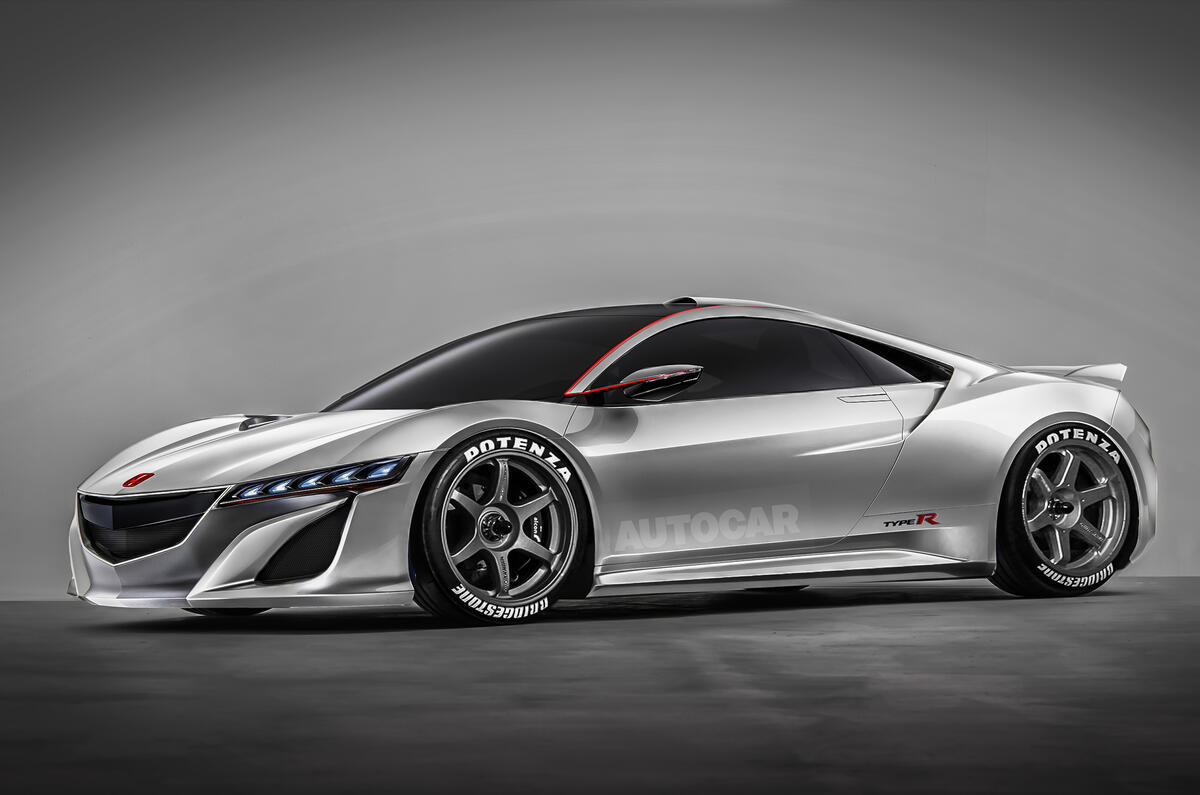Honda is considering making a lighter, track-focused Type R version of its new Honda NSX sports car, which could even become rear-wheel drive if Honda were to abandon parts of the NSX’s hybrid powertrain.
At the moment, the NSX has a 500bhp 3.5-litre, twin-turbo V6 engine in its middle, with a 47bhp electric motor attached to the crank and driving the rear wheels, and a pair of electric motors at the front. A Type R could mean the loss of the front electric motors and their batteries, in the first wave of a weight loss regime that, in total, would leave the NSX type R weighing hundreds of kilos less than its 1725kg donor car.
Nick Robinson, Dynamic Development Leader on the NSX project, confirmed at the launch of the standard NSX that, although the Type R project hasn’t officially been signed off yet, there is a huge will within Honda do to it – and the hope that the new NSX is just the start of a revival of the company’s sporting heritage. The NSX Type R would be the logical next step.
All in, the NSX’s hybrid drive system weighs 150kg. Although not all of that would be dispensed with to create a Type R – the rear drive motor, which would act as an alternator, starter motor and flywheel would remain – its loss would make a considerable difference to the NSX’s 1725kg kerbweight.
We get behind the wheel of the new Honda NSX to see what it can do on the road and the track
Intelligent use of other, lightweight, materials, could reduce the Type R’s kerbweight yet further. “There are places weight could be cut out,” says Robinson. “We are Honda so cost [of exotic materials on the regular car] is a consideration, but for a limited edition? Why not?”
The regular NSX was benchmarked against a Porsche 911 Turbo, Ferrari 458 Italia and Audi R8 V10. “We also benchmarked a Porsche 911 991 GT3,” says Robinson, “but only for steering feel, that’s all. The GT3 is a very track focused car. But for a Type R, of course, it could be a direct competitor,” he said.
If the front-drive mechanisms were to be ditched, Honda has some experience of the NSX in rear-driven form only. “There is a maintenance mode,” says Robinson, who likened enabling it to enabling cheats on a PlayStation games console – press up up, down down, left two right two, etc – in which form ABS and all electric motor assistance is switched out. Robinson says the handling and steering are slightly odd, because the latter, particularly, is calibrated to work in conjunction with driven front wheels. But he concedes “it’s a drift machine”.








Join the debate
Add your comment
Erm.
Coded...
Wow. Do other cars have cheat